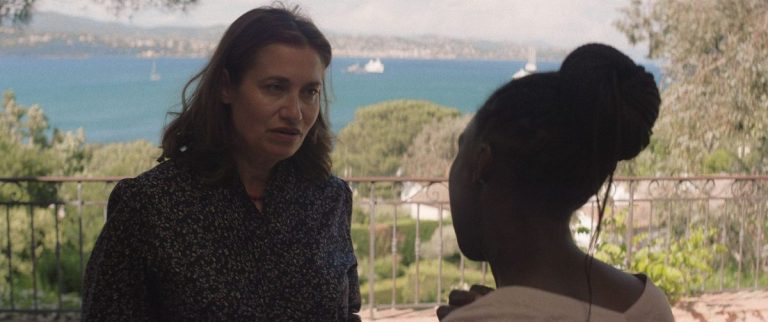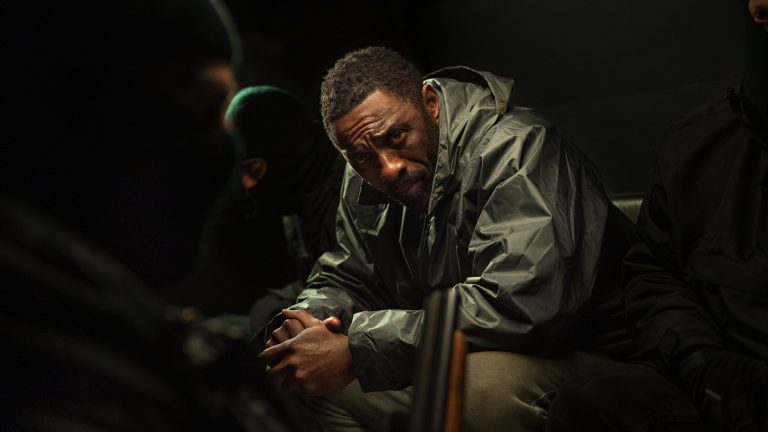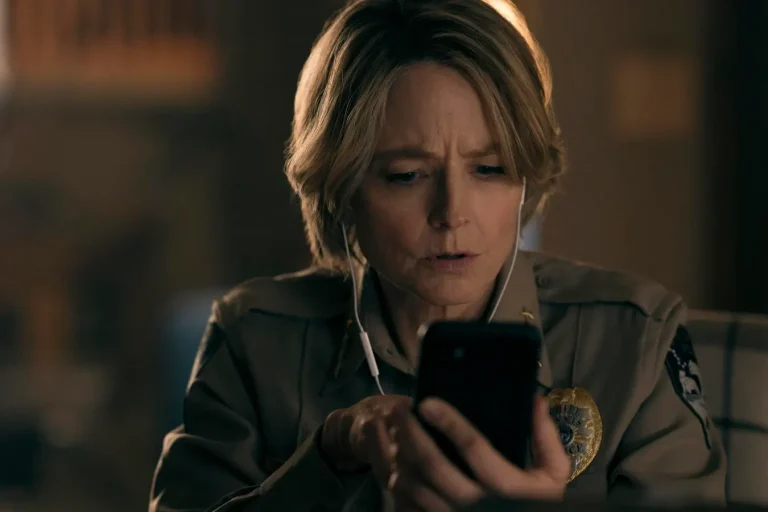The Pope’s Exorcist (2023) Movie Review: The lasting impact and success of any film genre are always intertwined with the dominant genre at the box office to a certain extent. As a filmmaker backed by a big studio, if you don’t adapt and grow in sync with the conventions of the way the masses consume media, you run into the fear of becoming obsolete. After all, that’s what we saw with the decline of the Western genre that once seemed to rule the West. But the horror genre, for the large part, has always been relatively impenetrable to any such direct influences. While there has always been a dominant subgenre within in terms of cultural waves, the audience’s urge to seek intoxicating stories never runs out of, well, spirit.
The age-old convention of opening a horror film with a classic line that’s supposedly meant to set the tone of a film isn’t a new trope. But director Julius Avery opens “The Pope’s Exorcist” with a line reading how the devil is the happiest when you think it doesn’t exist. While the film made its tone felt through the manipulative eerie music, I kept wondering throughout the runtime of it how exactly the line was related to the story. In it, Russel Crowe plays an eccentric exorcist named Father Gabriele Amorth.
He’s the kind of protagonist you would often see in horror films told from the point of view of a young spirited protagonist, except here he’s an exorcist of the Diocese of Rome – an Italian Catholic priest who takes orders directly from the Pope (Franco Nero). With his infectious personality, he indulges in acts that don’t particularly sit well with the Church just because he thinks exorcism needs to be carried out differently depending on various subjects. Though the Pope is supportive of Amorth’s ways and intentions, some others, including Cardinal Sullivan (Ryan O’Grady), feel exorcism and demons are dreadfully old superstitious ideas that do not sit well with the image of a modern church.
Based on Gabriele Amorth’s memoirs named “An Exorcist Tells His Story” and “An Exorcist: More Stories,” the film is set in 1987 Castile. Once we’re introduced to Father Amorth in Rome, we get the storyline back in Castile, Spain, of a grieving widow, Julia (Alex Essoe), and how she decides to go about her life with her daughter Amy (Laurel Marsden), and her young son Henry (Peter DeSouza-Feighoney). The latter is the one who clearly seems traumatized by the tragedy of his father’s death.
The family decides to take up a secluded residence – an abandoned church which is the only thing Julia’s husband left for the rest of the family. Her idea is to renovate the church, sell it and later return back home to the USA. As mysterious things begin to consume Henry, a local priest, Father Esquibel (Daniel Zovatto), comes in and offers his support. But once things escalate and take a more sinister turn, Father Amorth must intervene.
There’s interesting character motivation the film sets up for Amorth – one that separates him from most priest characters we usually get in horror films. He’s a man struggling with the choices of his own past. His ghosts haunt him, as do the sprout of survivor’s guilt and the failure to save a young woman he once knew was in mental agony. A couple of his scenes with Esquibel, who himself chose the church over the love of his life, show echoes of what the film could’ve been.
Amorth’s quirky traits – his temptation of gulping down double-shot espressos and whiskey while cheekily going around chirping ‘Cuckoo’ find a more resonating emotional framework with these scenes. But I don’t know what tone the film was going for, as it occasionally morphs into portions directly inspired by buddy comedies.
If so, that could’ve offered a fascinating spin on this mostly forgotten subgenre. But “The Pope’s Exorcist” also wants to be a clever ‘based on a true story’ film, recreating real-life events while never quite committing to its tone. The ghost goes on talking for way too long rather than inflicting its menace. The result is a film that neither feels immersive nor intoxicating – the latter of which is further amplified by sheer incapability to make good use of its setting.
By the third act of the film, the exorcism gets replaced by a CGI-fest of action spectacle. It reminded me of last year’s terrible final act of “The Invitation,” which brings me back to the point I made earlier. There’s also a weirdly placed shot of Amorth sitting on a giant throne-like platform that looks straight out of a film like “Black Adam.” Unfortunately, the result is the same numbing effect the DC film had, where even the heightened and supernatural genre conventions and logic take a backseat. “The devil does not like the jokes,” Crowe’s Amorth advises at one point to Esquibel. I wish someone could’ve said the same to the makers.




![The Tonal Difference between Peter Rabbit [2018] and Christopher Robin [2018]](https://79468c92.delivery.rocketcdn.me/wp-content/uploads/2018/03/Untitled-768x308.png)
![Shadows [2021]: ‘NYAFF’ Review – An Uninventive Thriller that barely flares](https://79468c92.delivery.rocketcdn.me/wp-content/uploads/2021/08/Shadows-2021.jpeg)
